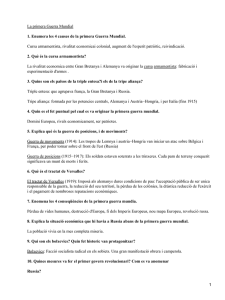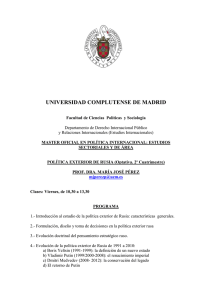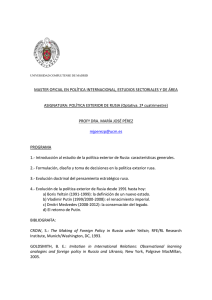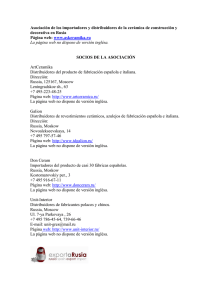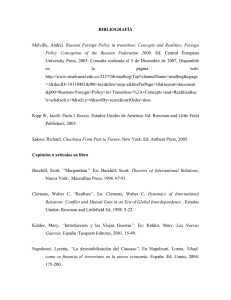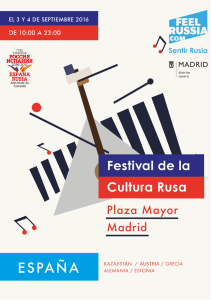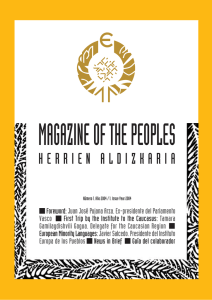economía
Anuncio
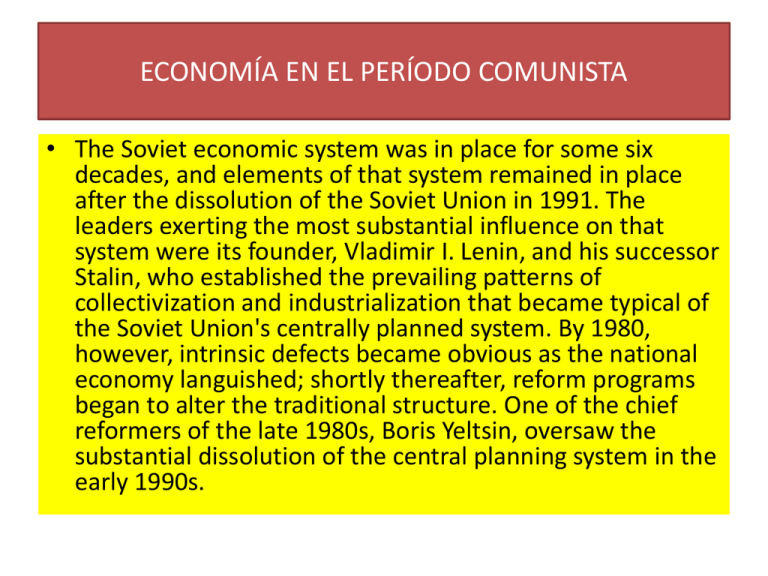
ECONOMÍA EN EL PERÍODO COMUNISTA • The Soviet economic system was in place for some six decades, and elements of that system remained in place after the dissolution of the Soviet Union in 1991. The leaders exerting the most substantial influence on that system were its founder, Vladimir I. Lenin, and his successor Stalin, who established the prevailing patterns of collectivization and industrialization that became typical of the Soviet Union's centrally planned system. By 1980, however, intrinsic defects became obvious as the national economy languished; shortly thereafter, reform programs began to alter the traditional structure. One of the chief reformers of the late 1980s, Boris Yeltsin, oversaw the substantial dissolution of the central planning system in the early 1990s. ECONOMIA I • Russia has undergone significant changes since the collapse of the Soviet Union, moving from a globally-isolated, centrally-planned economy to a more market-based and globally-integrated economy. • Economic reforms in the 1990s privatized most industry, with notable exceptions in the energy and defense-related sectors. The protection of property rights is still weak and the private sector remains subject to heavy state interference. • Russian industry is primarily split between globally-competitive commodity producers - in 2009 Russia was the world's largest exporter of natural gas, the second largest exporter of oil, and the third largest exporter of steel and primary aluminum - and other less competitive heavy industries that remain dependent on the Russian domestic market. • This reliance on commodity exports makes Russia vulnerable to boom and bust cycles that follow the highly volatile swings in global commodity prices. • The government since 2007 has embarked on an ambitious program to reduce this dependency and build up the country's high technology sectors, but with few results so far. The economy had averaged 7% growth since the 1998 Russian financial crisis, resulting in a doubling of real disposable incomes and the emergence of a middle class. ECONOMIA II • • • • Russian economy, was one of the hardest hit by the 2008-09 global economic crisis as oil prices plummeted and the foreign credits that Russian banks and firms relied on dried up. The Central Bank of Russia spent one-third of its $600 billion international reserves, the world's third largest, in late 2008 to slow the devaluation of the ruble. The government also devoted $200 billion in a rescue plan to increase liquidity in the banking sector and aid Russian firms unable to roll over large foreign debts coming due. The economic decline bottomed out in mid-2009 and the economy began to grow in the first quarter of 2010. However, a severe drought and fires in central Russia reduced agricultural output, prompting a ban on grain exports for part of the year, and slowed growth in other sectors such as manufacturing and retail trade. High oil prices buoyed Russian growth in the first quarter of 2011 and could help Russia reduce the budget deficit inherited from the lean years of 2008-09, but inflation and increased government expenditures may limit the positive impact of these revenues. Russia's long-term challenges include a shrinking workforce, a high level of corruption, difficulty in accessing capital for smaller, non-energy companies, and poor infrastructure in need of large investments. RUSIA RECURSOS NATURALES • • • • • The traditional centers of economic activity are almost exclusively located in the European part of Russia, which once offered considerable coal and natural gas to drive heavy industry . But the European fuel base was largely depleted by the 1980s, forcing Russia to rely on Siberian deposits much farther from the industrial heartland. Russia is one of the world's richest countries in raw materials, many of which are significant inputs for an industrial economy. Russia accounts for around 20 percent of the world's production of oil and natural gas and possesses large reserves of both fuels. This abundance has made Russia virtually self-sufficient in energy and a large-scale exporter of fuels. Russia also is self-sufficient in nearly all major industrial raw materials and has at least some reserves of every industrially valuable nonfuel mineral. Russia possesses rich reserves of iron ore, manganese, chromium, nickel, platinum, titanium, copper, tin, lead, tungsten, diamonds, phosphates, and gold, and the forests of Siberia contain an estimated one-fifth of the world's timber, mainly conifers. The iron ore deposits of the Kursk Magnetic Anomaly, close to the Ukrainian border in the southwest, are believed to contain one-sixth of the world's total reserves. Intensive exploitation began there in the 1950s. Other large iron ore deposits are located in the Kola Peninsula, Karelia, south-central Siberia, and the Far East. The largest copper deposits are located in the Kola Peninsula and the Urals, and lead and zinc are found in North Ossetia. RUSIA TRANSPORTE I • La red de transporte esta principalmente centrada en los ferrocarriles, tanto para el traslado de mercaderias como el de pasajeros, seguido de los oleoductos y gasoductos ya que estos facilitaron la expansión de las industrias petroleras y de gas. Y el transporte marítimo permitió el crecimiento del comercio exterior. • En los ultimos años también se ha avanzado en el transportes de líneas por carretera, dado que en otros tiempos no se le habia prestado demasiada atención. El número de líneas de la red de ferrocarriles ha aumentado en la Rusia europea, en concreto en San Petersburgo, aunque también llega hasta Siberia y las regiones más al este. Son las líneas con mayor tráfico del mundo, la que se destaca es la que cubre la región de Siberia occidental, comunicada por el Transiberiano, donde la frecuencia de los trenes llega a ser de tres minutos. Dado a que esta zona esta muy agloomerada se han construido líneas paralelas para aliviar el tráfico. • En la zona donde más se utiliza el transporte de trenes, es la parte europea del país. RUSIA TRANSPORTE II • Los puerto más transitados son, Novorossiisk en el mar Negro, San Petesburgo y Kaliningrado en el Báltico, Najodka, Vostochnyy, Vladivostok y Vanino en las costas del Pacífico y Múrmansk y Arjanguelsk en el Ártico. • El Volga es la vía fluvial más importante de Rusia y por donde pasa más de la mitad del tráfico fluvial del país. La navegación está favorecida por la construcción de siete diques, además del canal Volga-Don al sur, y la vía Volga-Báltico al norte. El canal facilita la salida a mar abierto a través del mar Negro y la segunda por el Báltico. Los puerto más importantes de esta zona son Ríbinsk, Nizni Nóvgorod, Samara, Volgogrado y Astracán, el de Roston on Don en el mar de Azov. Los puertos de Moscú estan comunicados con el sistema fluvial del Volga a través del canal de Moscú. • Por otra parte Rusia cuenta con una importante red de oleoductos y gasoductos que en su mayoria recorren todo el país. Los oleoductos comunican las áreas productoras de Siberia occidental y los campos del Volga-Urales, con las zonas de mayor consumo en la Rusia europea y otros países de Europa. La gran cantidad de gasoductos, conectan a Rusia con otros países de Asia cental y el oeste de Kazajstán, aunque hay otros con menos importancia. FEDERACION RUSA. YACIMIENTOS DE PETROLEO http://www.lib.utexas.edu/maps/commonwealth/soviet_pet_deposit_82.jpg INDUSTRIA RUSA • Complete range of mining and extractive industries producing coal, oil, gas, chemicals, and metals; all forms of machine building from rolling mills to highperformance aircraft and space vehicles; • Defense industries including radar, missile production, and advanced electronic components, • Shipbuilding; road and rail transportation equipment; communications equipment • Agricultural machinery, tractors, and construction equipment; electric power generating and transmitting equipment; medical and scientific instruments; consumer durables, textiles, foodstuffs, handicrafts
